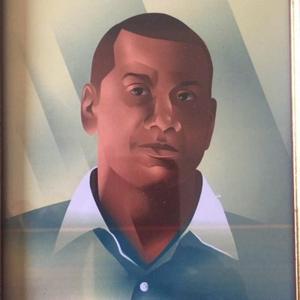
“Early mornings, I could hear the church bells ringing, azaan from the mosque and chants from the Hindu temples.”
Those are among the earliest memories of Indo-jazz guitar player Arthur Gracias. He now lives in Australia but for four decades from the late 1960s, he was a prominent part of the Calcutta music scene.
At my prodding, he wrote this account of his musical journey.
I was born in a musical family in Calcutta on June 4, 1948. My parents played piano and guitar so I was exposed to music from a very young age. We had regular music sessions at home with relatives and friends.
My father was born in India in 1900. His father was a Spanish trader who came to India . My mother was born in India in 1910 of Anglo Indian parents . I have one sister.
I studied at St Paul’s Mission School, Calcutta. I learned to play Western classical music (at the Royal School of Music), Indian classical music and jazz.
Mother Teresa was our neighbour. My father did social work for Mother and accompanied her to care for the lepers and the poorest of the poor in the villages. I was very young then and went along with my father, Mother Teresa, Sister Gertrude and Sister Agnes. Early mornings on Sundays we travelled in a blue ambulance which had an emblem with the words "Touch the lepers with your compassion."
It was very sad that these people were treated as untouchables. She treated every human being with love and respect and did not discriminate against any caste or creed. Mother was my inspiration. Many of my friends joined her order, (Missionaries of Charities ) pursuing her values and principles.
In 1967, I joined Felix Torcato’s Quartet at the Oberoi Palace Hotel in Kashmir. The next year, I began to perform with pianist Sonny Lobo at Prince’s, at the Oberoi Grand Hotel in Calcutta.

In this photo, the frilled shirts we are wearing in the photograph was for a special “Latino night” at which we played music of Xavier Cugat, Perez Perado, and Victor Sylvester.
Sonny Lobo was regarded as the Duke Ellington of the East. He had a dynamic personality and was a brilliant pianist. He was a strict disciplinarian and had the best musicians in the country to execute the challenging music. They had to be versatile and perform on two or more musical instruments.
Sonny was on piano and the arranger. He regularly imported orchestrations of Duke Ellington, Count Basie etc. from the the UK and the US. He encouraged me to transcribe music from records and arrange and orchestrate it for the band.
We performed classical music overtures and Viennese Waltzes for lunch sessions and high society dance music for the night sessions. If you stuffed up the music you had to stay back the next day and practice till perfected after the lunch session.
The musicians had to be well dressed (in dress suits ). A waiter was assigned to look after the band. He knew each file for the musicians and placed them on their respective music stands before the band commenced and removed them after. He also took our lunch, dinner and supper orders and ensured the food was ready during the break.
We were highly paid and provided with accommodations for our families.
Sonny was musical director for all Oberoi Hotels in India and booked entertainers, cabaret artistes and spot singers from around the globe.
The clientele at Prince’s were the top notch of society and did not mind spending lavishly to enjoy the best in entertainment, exotic food and wines. Those were "grand" times.

Performance at an Indian classical music conference at Calcutta's Rabindra Sadan in September 1972, which continued for three consecutive nights with some of the finest musicians in the country.
A jugalbandi (duet ) with Pandit Dulal Lahiri on violin, myself on Guitar and the great Pandit Nanku Maharaj on tabla. We explored the Raag Piloo in the North Indian style in three movements , alaap, jor andjhala. In Jhaptaal ( a rhythmic cycle of 10 beats), the exploration of the piece lasted 45 minutes. It was deep and expressive.

Using an Indian section of sitar, violin and two tablas and western section of trumpet, alto sax, tenor sax, keyboard, bass guitar, drums and guitar.
My compositions were based on various raags, with inherent harmonies in symmetrical and asymmetrical rhythmic structures. One of the compositions, entitled Freedom and Equality, was based on the Raag Kafi and lasted 30 minutes .
The concert was well received by the audience and had rave reviews un the press.The Junior Statesman wrote “GOODNESS GRACIAS IT’S ARTHUR." The experiment was brave, bold and successful. It was an attempted to create an entirely new musical language.
It was broadcast on BBC by Humphrey Walwyn. Many radio and television broadcasts followed. At the timem I was adjudicator of All India Radio, Eastern India.

The lunch sessions we played soft easy listening music: bossa nova, boleros, beguine and waltzes. The band livened up at night playing soul, blues, funk, jazz and popular music.
We had a very strong following. The dance floor would be jammed packed on weekends. The band also performed on radio and television regularly.

For jazz enthusiasts in the city of Calcutta it was all that jazz and much more when Herbie Hancock and members of The Thelonious Monk Institute of Jazz performed in the city in 2007. I sat in with the band.
This event was organised by the United States Information Service. The idea was to reinforce the interest in this form of music. Some say jazz evolved from a mix of dance music and marching band music among the African American community and started sometime in the late 1800s in the American South.
Whatever it's origins, it's clear that jazz has been the voice of freedom for so many countries over the past half century.
More next week.





















Write a comment ...